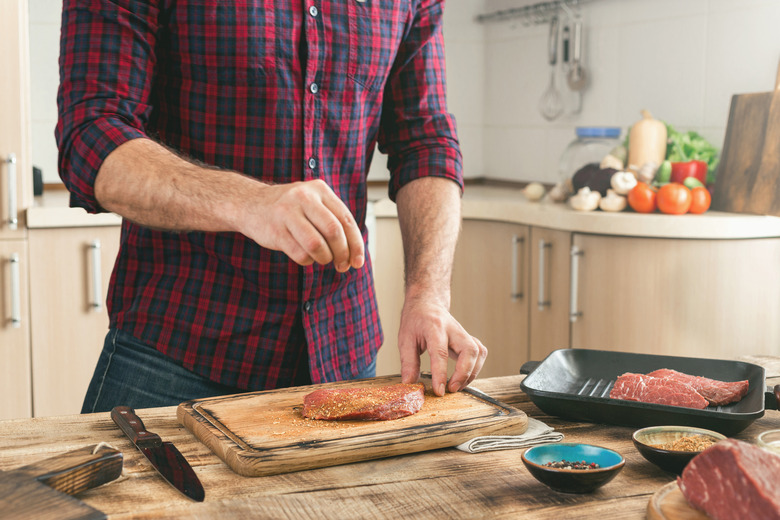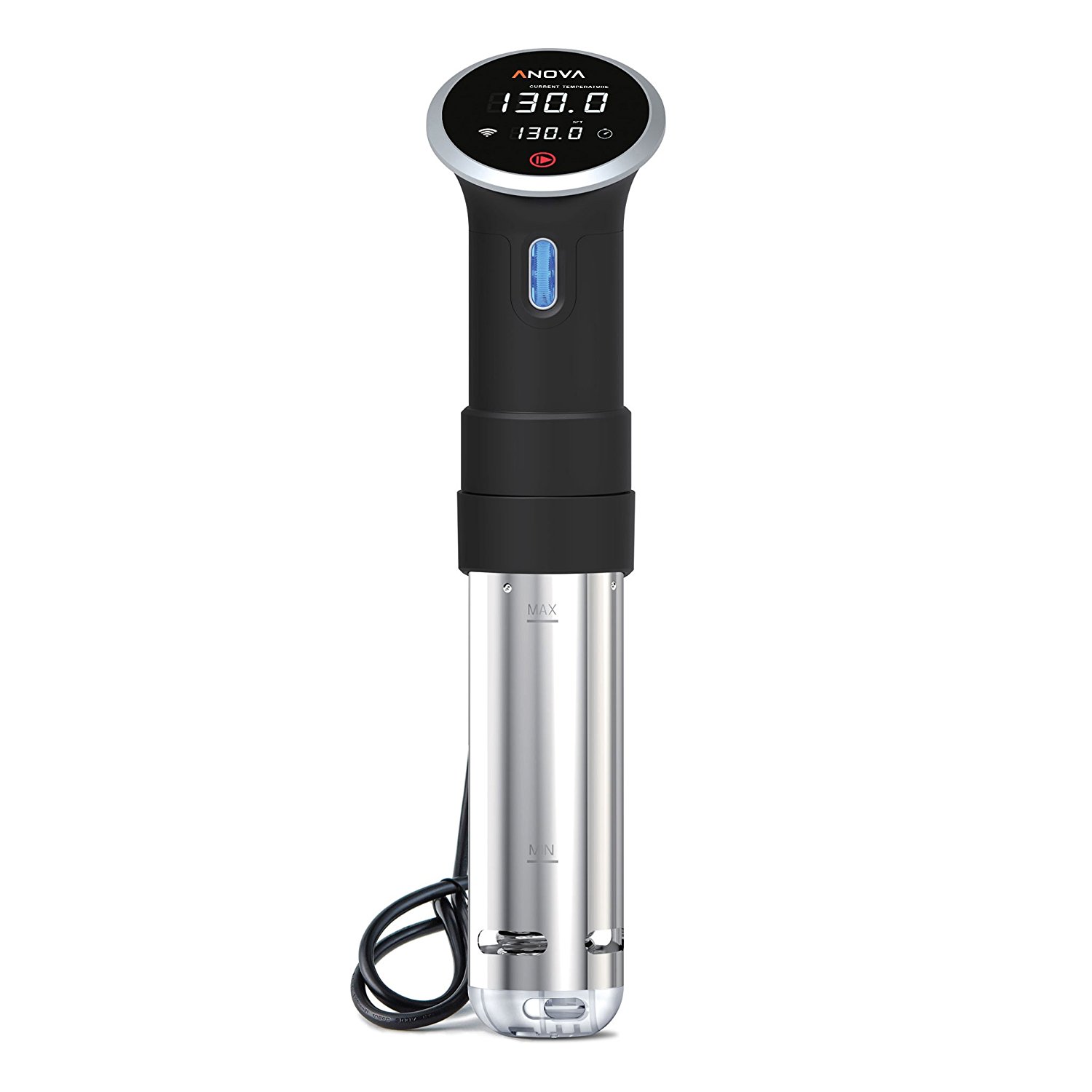You've Been Cooking Steak Wrong Your Entire Life
You're cooking steak all wrong! There, did that get your attention? Great! Now allow me to wax lyrically about a restaurant trend that has worked its way into many home kitchens. It's not necessarily the newest, hottest technique — it's actually been around for a while at this point — but it's still absolutely worth knowing about. I am talking about sous vide, the technique that takes vacuum-sealed bags of ingredients and floats them around in a water bath at a fixed temperature.
Here's the deal. If you are grilling steak alfresco or cooking your steak in a cast-iron pan on the stove or in the oven, you aren't actually doing anything wrong. Many agree that the perfect way to cook a steak is, in fact, the old-fashioned ripping-hot-pan way. However, if you are looking for a method that offers pretty unparalleled precision when it comes to the internal temperature of your steak, sous vide-ing your steak is definitely worth considering.
Cooking steak sous vide is perfect for dinner parties or cooking for a crowd because you can set the temperature to your ideal internal temperature, drop in your sealed steak (or steaks) and get on with your day. The magic of sous vide cooking is that the temperature remains constant, to the degree, thereby eliminating any risk of overcooking. Simply set it and forget it until it's time to eat, then remove the steak and pat it dry.
"But what about the glorious crust," you ask? You can still have your crusty steak and eat it too! Finish a sous vide steak by searing it in a ripping-hot pan (not nonstick though) to develop that sought-after crust. Your steak will be perfectly cooked, and what's more, you won't have to spend your whole party cooking in the kitchen! Now doesn't that sound like a win-win?
To cook a sous vide steak, season your steak with whatever seasonings you like (a generous sprinkling of salt and pepper is a great place to begin) then seal it up in a food-safe plastic bag. Use a vacuum sealer to remove as much air as possible and to prevent your steak from floating rather than being fully submerged. (If you don't have a vacuum sealer, a good ole' resealable plastic bag will work, just make sure to press out a much air as possible.) Set the sous vide machine to 130 degrees Fahrenheit for a perfect medium rare steak, and once the water comes up to temperature, drop in your steak and leave it to circulate for about an hour and a half before removing the steak from the bag, drying it off (with some paper towel) and finishing it in a pan.
These days there are dozens of different sous vide machines to choose from, but which one should you actually buy? Luckily for you, our sister site BestReviews did all the hard work so you don't have to. With a team of experienced researchers, writers and testers, they bought and tested an array of different sous vide machines. The product that came out on top was the Anova Sous Vide Precision Cooker, a sous vide machine that is easy to use (it can be attached to any pot you have) and has smart device control and cooking notifications, which mean you don't need to hover in the kitchen to know what's going on! Certainly many of the nearly 4,000 Amazon reviewers seem to love this device, so if you're on the hunt for a stellar sous vide machine, this seems like a great place to start. With a plateful of perfectly cooked steak, all you'll need to think about, perhaps, are some excellent grilled sides that will go perfectly with steak


